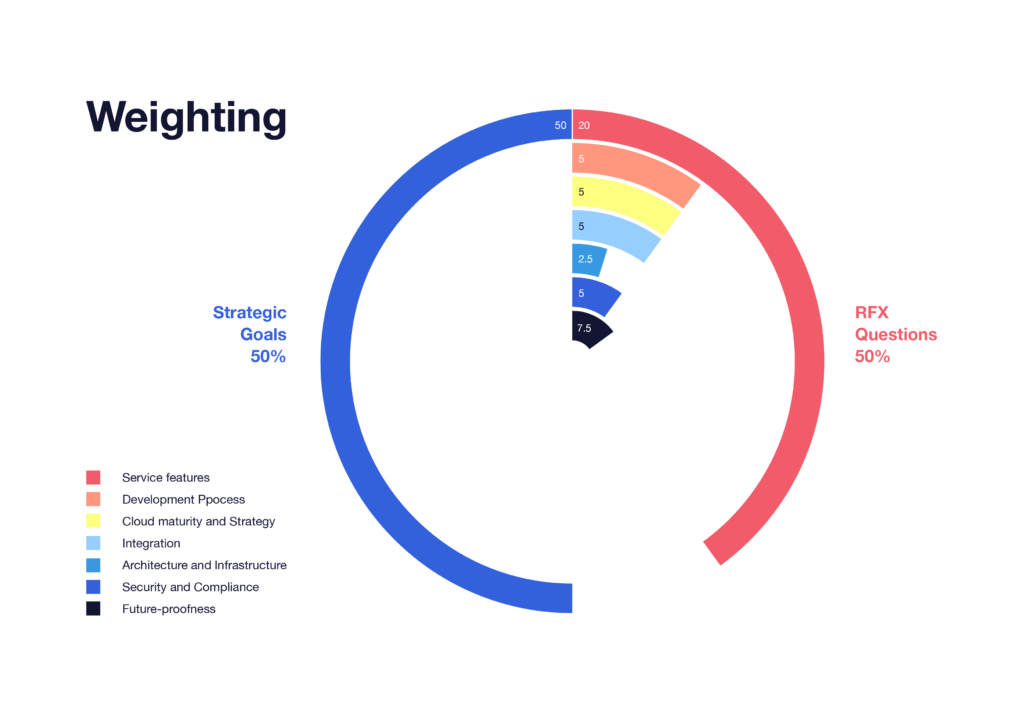
Many payment card issuers are turning to Software-as-a-Service models – quite understandably. Commissioning in-house solutions is often more cumbersome and expensive than buying a payments solution as a service. Running a solution in-house also directs resources away from your core business: building the best possible payment experience for your end-customers.
When choosing a card platform provider, the last thing you want is to spend money, time, and effort and still end up locked in with a vendor and system that don’t deliver what you need for your payments business. That is why taking a hard look at your RFP/RFI process will continue to pay back long into the future.
In this article, we share with you the best practices on SaaS RFX processes, applicable across enterprises.
By reading, you’ll learn:
The key to a successful RFX, and to finding the best-fit solution for your business, is having a clear North Star. Here are some questions for you to get started:
This information is already documented in your strategy. At its best, buying in a modern way will bring you closer to your strategic goals. The ‘how we solve this’ should always only be a means to an end and never direct your decision making process.
Building the RFX starts from defining your business needs and the desired target state. By getting the right people involved, you will both get a comprehensive and complete RFX and gain internal buy-in for the project.
Here are some people you want input from to build a successful RFX:
By giving a detailed overview of your company and the business you are in, your potential vendors will better understand your needs, challenges and opportunities.
Sharing actuals and forward-looking estimates on your operations (e.g. your payments solution portfolio, card programme(s), volumes, and geographic reach) will help the SaaS vendor best present their service in your context.
A supplier will deliver a solution with the requested capabilities. They will take your requirements and give you something functional. This kind of approach will require you to operate parts of your business separately or bring in a bigger pool of providers.
A partner understands your business today and where you want to be tomorrow. They will actively think along with you and give strategic guidance.
You don’t need to tell them which functionalities you want. You only need to tell them what the end state should be and they deliver the solution (tech, expertise, processes and compliance) that gets you there.
Look back to best practice number 1: Setting your strategic goals straight. So, ask yourself: What are the most important goals that you want to achieve by buying a service?
Choose the business critical topics that the solution should be supporting or enabling and derive relevant questions from them. Avoid asking questions based on how things are done today with a current vendor. They are done a certain way because of limitations the existing vendor might have, or capabilities they can’t support.
These limitations should not be the frame for your future solution. Focus on what you want the ideal end state of your solution to be, not whether your current vendor would be able to achieve it.
What companies often stumble on is trying to predict every possible situation and scenario before it takes place. This leads to an overly long list of questions where high priority items get no more weight than possible future scenarios.
Many RFXs include questions that add no value. Those questions end up taking weight and essentially diluting the important questions.
Many companies think that ‘future-proofing’ your vendor means including all sorts of hypothetical scenarios that might be relevant for you at some point. Doing this will eliminate smaller vendors that might be more flexible, innovative and just what you need for your business right now.
To find the best vendor for your strategy, only include questions that apply to plans that are certain.
How do you know what is a high priority question? When writing it down, ask yourself why you want to know the answer.
Example:
A common problem with traditional RFX questions is that they can be interpreted in multiple ways and vendors always interpret the questions in a way that is favourable to them. While it takes a bit more effort to write down exactly what you need, it will serve you in the long run.
Example:
Every RFX lead should set at least half of the weight on how the solution meets your strategic goals (your ‘why’) and the rest on the solution functionality itself (your ‘how’).
Well defined strategic goals help you define the expected outcome and, eventually, set the correct metrics to validate that the outcome has been met.

Building a strong RFX questionnaire is a process, not a one and done thing. Evaluate and improve your template after every iteration of your RFX process to make it work better for your needs.
This applies to big migration projects as well. Don’t plan every project and every product at the same time. Start small and build trust with your vendor.
For example, build one type of card together first, implement changes first for a smaller group of loyal customers, get feedback and improve. You need a vendor who can be agile and start building day one but also has a solid track record in migrations.
You shouldn’t enter a partnership with the intention of ending it but sometimes unforeseen issues may surface. You don’t want to be stuck with a vendor that you are not happy with.
So make sure that you have an agreement about exit clauses, ask how you can protect your business continuity, and how costs are distributed if you need to migrate to another solution.
Did you like what you just read? Then check out The Ultimate Guide to Payments RFX in 2022: https://content.enfuce.com/guide/rfx-guide







Log in to access complimentary passes or discounts and access exclusive content as part of your membership. An auto-login link will be sent directly to your email.
We use an auto-login link to ensure optimum security for your members hub. Simply enter your professional work e-mail address into the input area and you’ll receive a link to directly access your account.
Instead of using passwords, we e-mail you a link to log in to the site. This allows us to automatically verify you and apply member benefits based on your e-mail domain name.
Please click the button below which relates to the issue you’re having.
Sometimes our e-mails end up in spam. Make sure to check your spam folder for e-mails from The Payments Association
Most modern e-mail clients now separate e-mails into different tabs. For example, Outlook has an “Other” tab, and Gmail has tabs for different types of e-mails, such as promotional.
For security reasons the link will expire after 60 minutes. Try submitting the login form again and wait a few seconds for the e-mail to arrive.
The link will only work one time – once it’s been clicked, the link won’t log you in again. Instead, you’ll need to go back to the login screen and generate a new link.
Make sure you’re clicking the link on the most recent e-mail that’s been sent to you. We recommend deleting the e-mail once you’ve clicked the link.
Some security systems will automatically click on links in e-mails to check for phishing, malware, viruses and other malicious threats. If these have been clicked, it won’t work when you try to click on the link.
For security reasons, e-mail address changes can only be complete by your Member Engagement Manager. Please contact the team directly for further help.